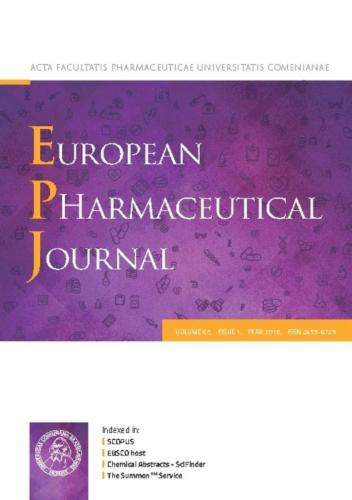Discovery of STING antagonists targeting cGAS-STING pathway to alleviate IMQ-induced psoriasis-like dermatitis
IF 4.3
3区 医学
Q1 PHARMACOLOGY & PHARMACY
引用次数: 0
Abstract
The cyclic GMP-AMP synthase (cGAS)-stimulator of interferon genes (STING) signaling pathway is pivotal in the immune defense against infections and cancer. However, aberrant activation of this pathway can trigger autoimmune and inflammatory diseases by inducing excessive production of type I interferon (IFN) and pro-inflammatory cytokines. Inhibition of the aberrant activation of the cGAS-STING signaling pathway by targeting STING represents a novel therapeutic strategy for these autoimmune and inflammatory disorders. In this study, we discovered three novel STING antagonists based on surface plasmon resonance (SPR), differential scanning fluorimetry (DSF), and ISRE (interferon stimulated response element)-luciferase assays. The efficacy and pharmacological mechanisms of the three STING antagonists for treating imiquimod (IMQ)-induced psoriasis-like dermatitis by western blotting (WB), flow fluorescence, and immunostaining. The three STING antagonists exhibited pan-inhibitory activities on the activation of both the human and mouse cGAS-STING signaling pathway. Intravenous and topical administration of the three antagonists alleviated the inflammation and skin lesions associated with IMQ-induced psoriasis-like dermatitis via suppression of the inflammatory cascade mediated by the IMQ-TLR-7-NF-κB/cGAS-STING-NF-κB/IL-1β-IL-1R-NF-κB/TNFα-TNF-R-NF-κB signaling axis. In conclusion, we identified three novel STING antagonists with pan-inhibitory activities against human and mouse STING, providing lead compounds for the future development of both STING antagonists and immune agents for therapeutically manipulating STING-driven diseases, such as psoriasis. Our findings offer another new therapeutic strategy for managing STING-driven autoimmune and inflammatory diseases, while also reemphasizing the critical role of the cGAS-STING signaling pathway in such conditions.

靶向cGAS-STING通路的STING拮抗剂缓解imq诱导的银屑病样皮炎的发现
环GMP-AMP合成酶(cGAS)-干扰素基因(STING)信号通路刺激因子在免疫防御感染和癌症中起关键作用。然而,该通路的异常激活可通过诱导I型干扰素(IFN)和促炎细胞因子的过量产生而引发自身免疫性和炎症性疾病。通过靶向STING抑制cGAS-STING信号通路的异常激活代表了这些自身免疫性和炎症性疾病的一种新的治疗策略。在这项研究中,我们基于表面等离子体共振(SPR)、差示扫描荧光法(DSF)和干扰素刺激反应元件(ISRE)-荧光素酶检测发现了三种新的STING拮抗剂。western blotting (WB)、流式荧光和免疫染色观察三种STING拮抗剂治疗咪喹莫特(IMQ)诱导的牛皮癣样皮炎的疗效和药理机制。这三种STING拮抗剂对人和小鼠cGAS-STING信号通路的激活均表现出泛抑制活性。静脉和局部给药三种拮抗剂通过抑制IMQ-TLR-7-NF-κB/ c气体- sting - nf -κB/IL-1β-IL-1R-NF-κB/TNFα-TNF-R-NF-κB信号轴介导的炎症级联反应,减轻了imq诱导的银屑病样皮炎相关的炎症和皮肤病变。总之,我们鉴定了三种新的STING拮抗剂,它们对人和小鼠的STING具有泛抑制活性,为将来开发STING拮抗剂和免疫药物治疗STING驱动的疾病(如牛皮癣)提供了先导化合物。我们的研究结果为治疗sting驱动的自身免疫性和炎症性疾病提供了另一种新的治疗策略,同时也再次强调了cGAS-STING信号通路在这些疾病中的关键作用。
本文章由计算机程序翻译,如有差异,请以英文原文为准。
求助全文
约1分钟内获得全文
求助全文
来源期刊
CiteScore
9.60
自引率
2.20%
发文量
248
审稿时长
50 days
期刊介绍:
The journal publishes research articles, review articles and scientific commentaries on all aspects of the pharmaceutical sciences with emphasis on conceptual novelty and scientific quality. The Editors welcome articles in this multidisciplinary field, with a focus on topics relevant for drug discovery and development.
More specifically, the Journal publishes reports on medicinal chemistry, pharmacology, drug absorption and metabolism, pharmacokinetics and pharmacodynamics, pharmaceutical and biomedical analysis, drug delivery (including gene delivery), drug targeting, pharmaceutical technology, pharmaceutical biotechnology and clinical drug evaluation. The journal will typically not give priority to manuscripts focusing primarily on organic synthesis, natural products, adaptation of analytical approaches, or discussions pertaining to drug policy making.
Scientific commentaries and review articles are generally by invitation only or by consent of the Editors. Proceedings of scientific meetings may be published as special issues or supplements to the Journal.

 求助内容:
求助内容: 应助结果提醒方式:
应助结果提醒方式:


